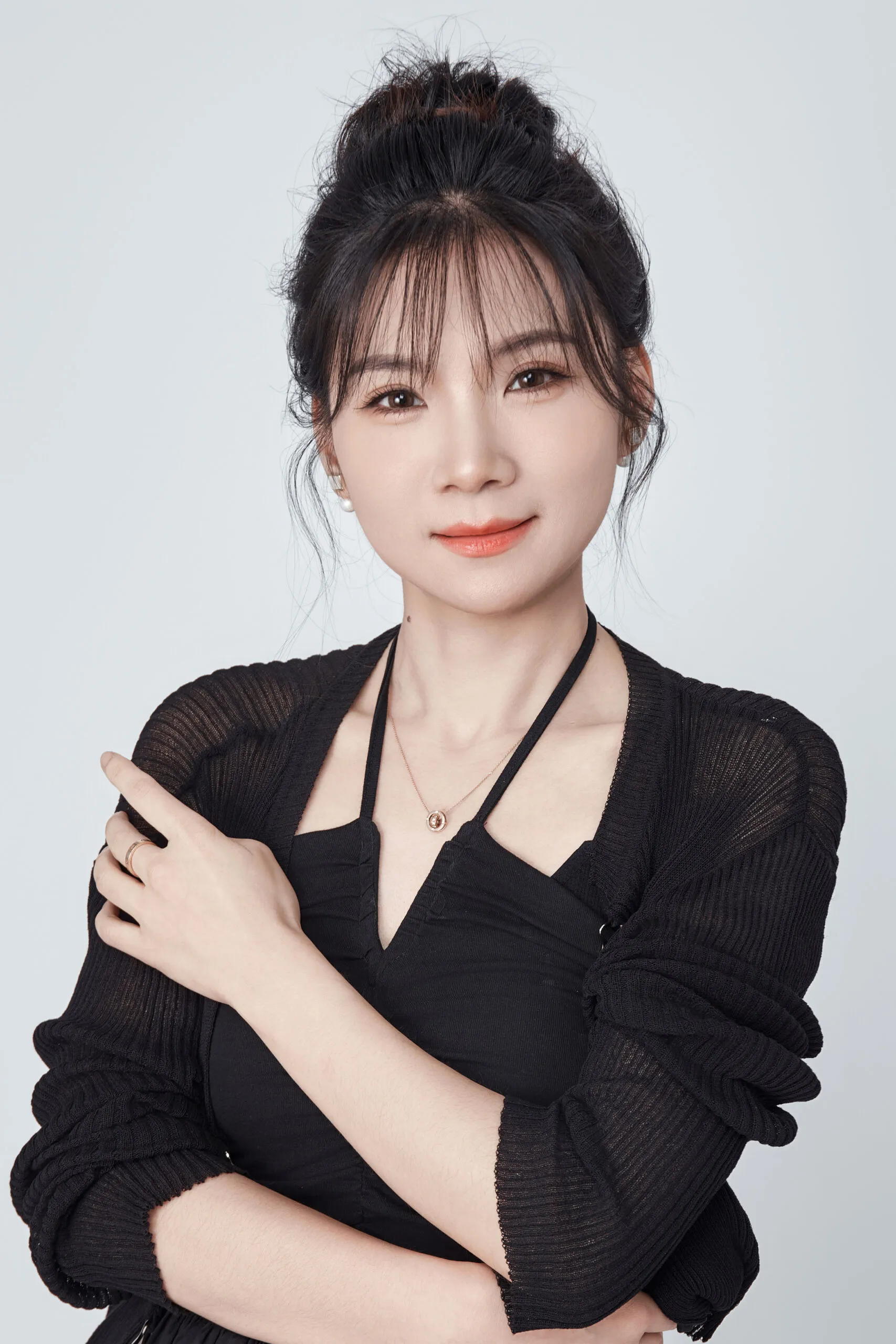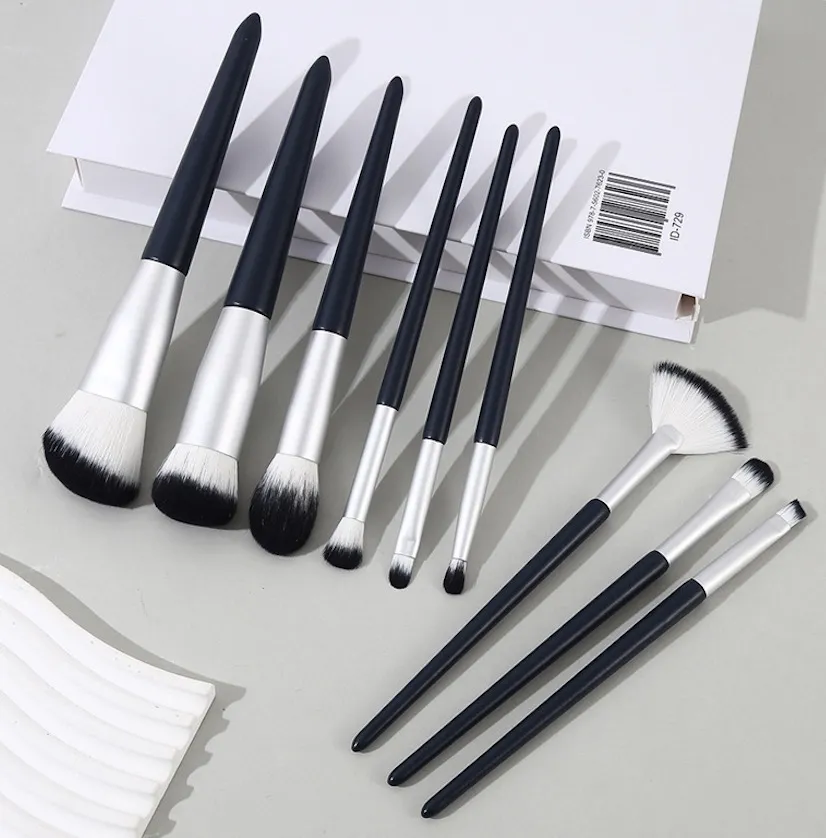Sourcing "high-quality" brushes feels like a gamble. You’re tired of inconsistent samples and vague supplier claims. I’ll show you the exact benchmarks to define and demand true quality.
The highest quality makeup brushes pair advanced synthetic fibers1 (like PBT/MCF) with seamless brass ferrules and weighted handles. Top consumer picks include Hourglass and Sigma, but OEM quality hinges on verifiable material specs, zero-shedding QC, and proven hygiene standards from your factory partner.
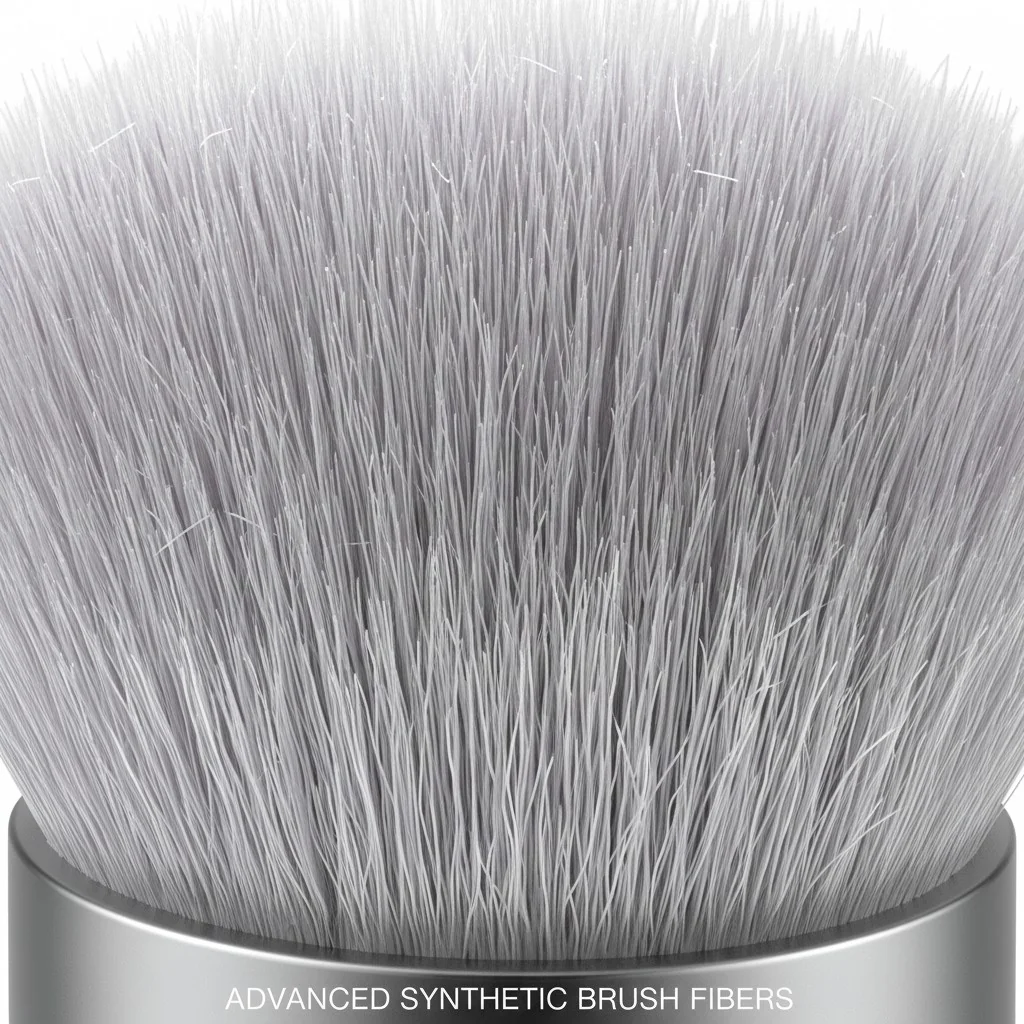
When I first started on the factory floor, I saw the huge gap between what brands thought they were buying and what they actually received. A brush that looks good in a photo can fall apart after a few washes if the wrong materials are used. The difference between a "good" brush and a "highest quality" brush isn’t magic; it’s engineering. It’s about understanding the technical details that create a tool that performs flawlessly and lasts for years. For brand founders like you, knowing these details is your biggest advantage. It allows you to move beyond vague marketing terms and demand specific, measurable quality from your suppliers. Let’s break down what those specifications really are.
Expensive brushes are guaranteed to last longer.False
Durability depends on construction—like seamless brass ferrules and quality crimping—not just price. A well-made, mid-priced brush can easily outlast a poorly constructed luxury one.
Natural hair brushes are always higher quality than synthetic ones.False
Modern synthetics (PBT/MCF) now match or exceed natural hair for creams and liquids, and offer superior hygiene and durability. Natural hair still excels for powder blending.
Quality Benchmarks: What Defines a “Highest Grade” Brush?
"Premium" is a meaningless marketing term from most suppliers. This leaves you guessing if you’re paying for real performance or just fluff. Let’s define quality with hard numbers.
Highest-grade quality is measurable. It means dense, springy brush heads with zero shedding after 50+ wash cycles, balanced handles (around 40–60 g) for control, and seamless brass ferrules2 that prevent corrosion and wobbling. It’s about performance you can prove, not just feel.
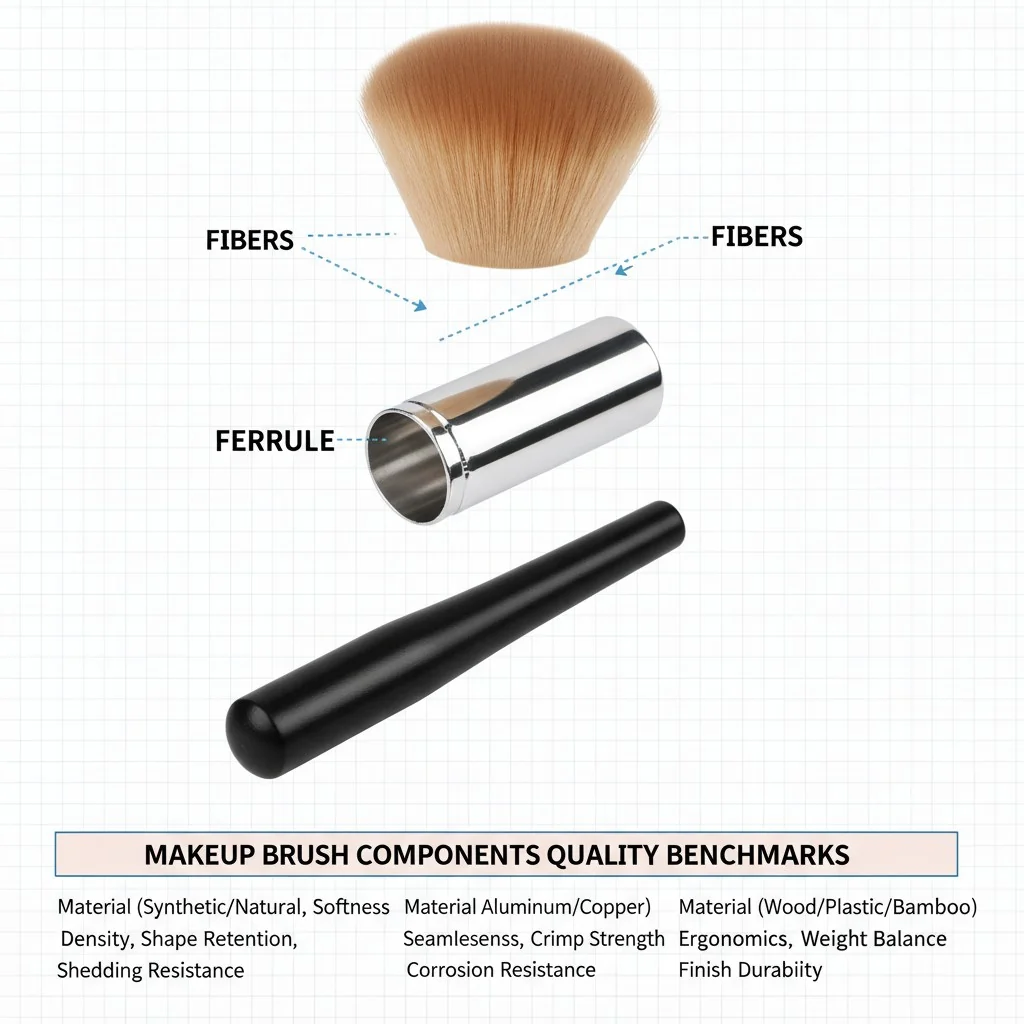
When we talk about the "highest grade," we’re moving past subjective words like "soft" and into the world of material science and engineering specs. This is how professional brands ensure every single brush in a production run meets their standards. I learned early on that if you can’t measure it, you can’t control it.
Fiber Tiers and Performance
Not all synthetic fibers are created equal. The material directly impacts how the brush picks up and applies product. Here’s a simple breakdown:
| Fiber Type | Best For | Key Characteristics |
|---|---|---|
| Standard PBT/Taklon | Liquids, Creams | Good performance, durable, and cost-effective. The industry workhorse. |
| BASF-Branded PBT | Powders, Liquids | A higher grade of PBT with enhanced softness and better powder pickup. |
| MCF (Micro-Crystal Fiber) | Powders | Engineered microstructure for superior powder pickup and release. The premium synthetic benchmark. |
For your QC, you should be able to ask a factory for data on powder pick-up (% of mass) and release uniformity.
Ferrules and Handles
The ferrule is the metal part that connects the handle to the bristles. This is a common failure point. I always recommend seamless brass with nickel plating. It resists corrosion and the deformation you often see with cheaper aluminum ferrules. The handle should be weighted for balance and control, especially for foundation brushes where precision is key.
A brush handle's weight has no impact on application.False
A weighted handle (≈40–60 g) provides better balance and control, leading to a more precise and even makeup application, a principle seen in high-end brands like Hourglass.
Brands vs. Factories: Where Does “Highest Quality” Actually Come From?
You love the performance of an Hourglass foundation brush, but how do you source that level of quality yourself? Most factories won’t share the specs that create that premium experience.
While consumer brands like Hourglass and Sigma validate what end-users love, true quality originates from the factory. It comes from verifiable material choices, strict process controls (like ISO 90013), and proven compliance with safety standards like RoHS and REACH for all materials.
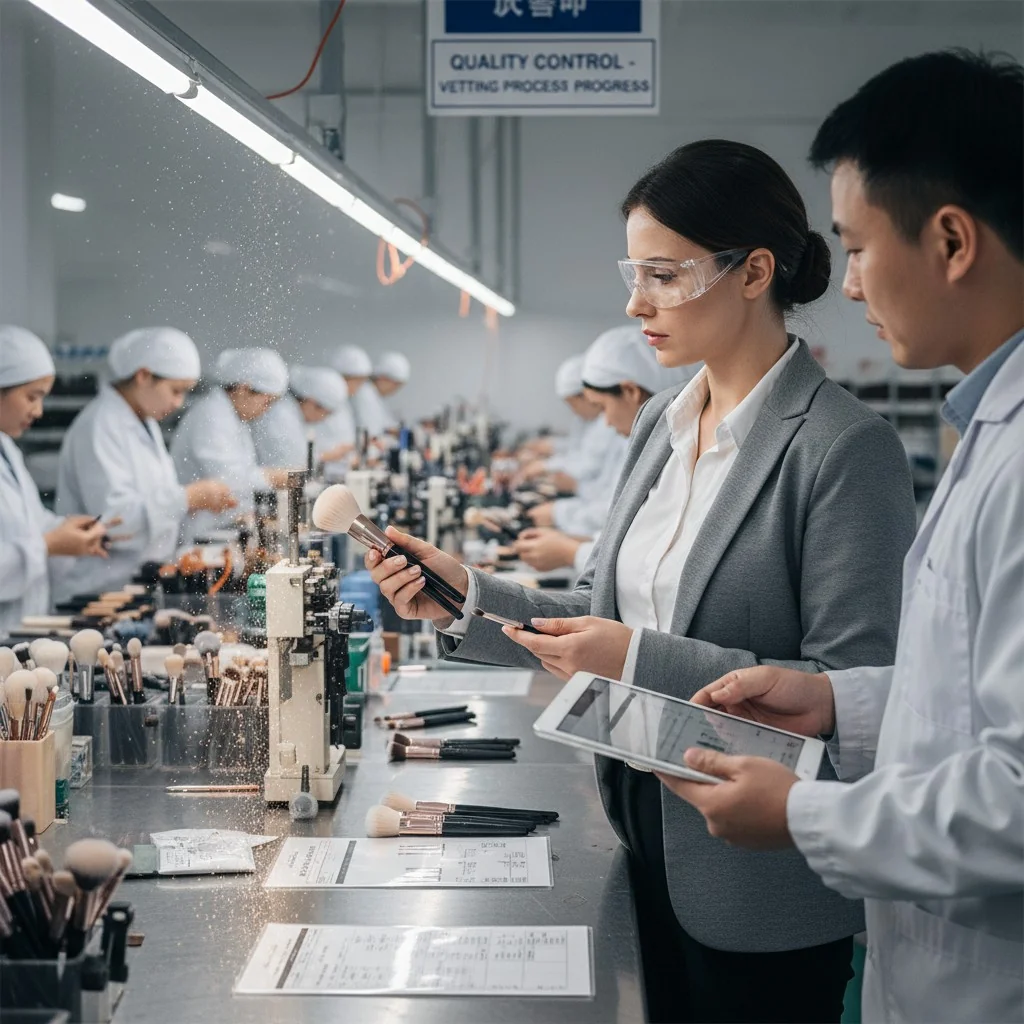
The secret isn’t finding the factory that makes brushes for a specific luxury brand. The secret is becoming the kind of client who knows exactly what to ask for. When you can talk about fiber diameter ranges and ferrule pull-test requirements, you change the conversation. You are no longer just a "buyer"; you are a partner in quality. This is how small brands command the same respect and quality as global giants.
How to Vet a Factory Like an Insider
When you talk to a potential factory, ask specific, technical questions. This shows them you know what you’re talking about.
- Fibers: "What are your fiber diameter ranges and taper specs? Can you provide certificates?"
- Ferrules: "Do you use seamless brass? What is the plating? We require a pull-test strength of over 20 Newtons."
- Assembly: "What is your Cpk for the crimping process? We require all brushes to pass a 50-cycle wash endurance test with zero shedding."
The Importance of Real Certifications
Don’t just accept a logo on a website. Ask for the documentation.
- ISO 9001: This shows the factory has a quality management system in place. It means they are serious about process control and consistency.
- FSC (Forest Stewardship Council): This verifies that any wood used in the handles comes from responsibly managed forests. It’s a key claim for sustainable brands.
- RoHS/REACH: These are EU standards that restrict hazardous substances in metals and paints. This is critical for ensuring your product is safe for consumers.
Antibacterial brushes eliminate the need for cleaning.False
Antibacterial treatments inhibit microbial growth on the brush but do not remove makeup residue, oils, and dead skin cells. Regular cleaning is still essential for performance and hygiene.
Hygiene Matters: How Do Data-Backed Cleaning Standards and Antibacterial Options Work?
Dirty brushes can cause skin issues and damage your brand’s reputation. But "antibacterial" claims from suppliers often feel like marketing gimmicks without any proof to back them up.
Data shows that uncleaned brushes are a real problem. One study found 81% of bacterial isolates on used brushes were Gram-positive, including Staphylococcus. Proper cleaning is non-negotiable. antibacterial fibers4 are only worthwhile if the factory can provide independent test reports verifying the species killed, the method, and the log-reduction rate.
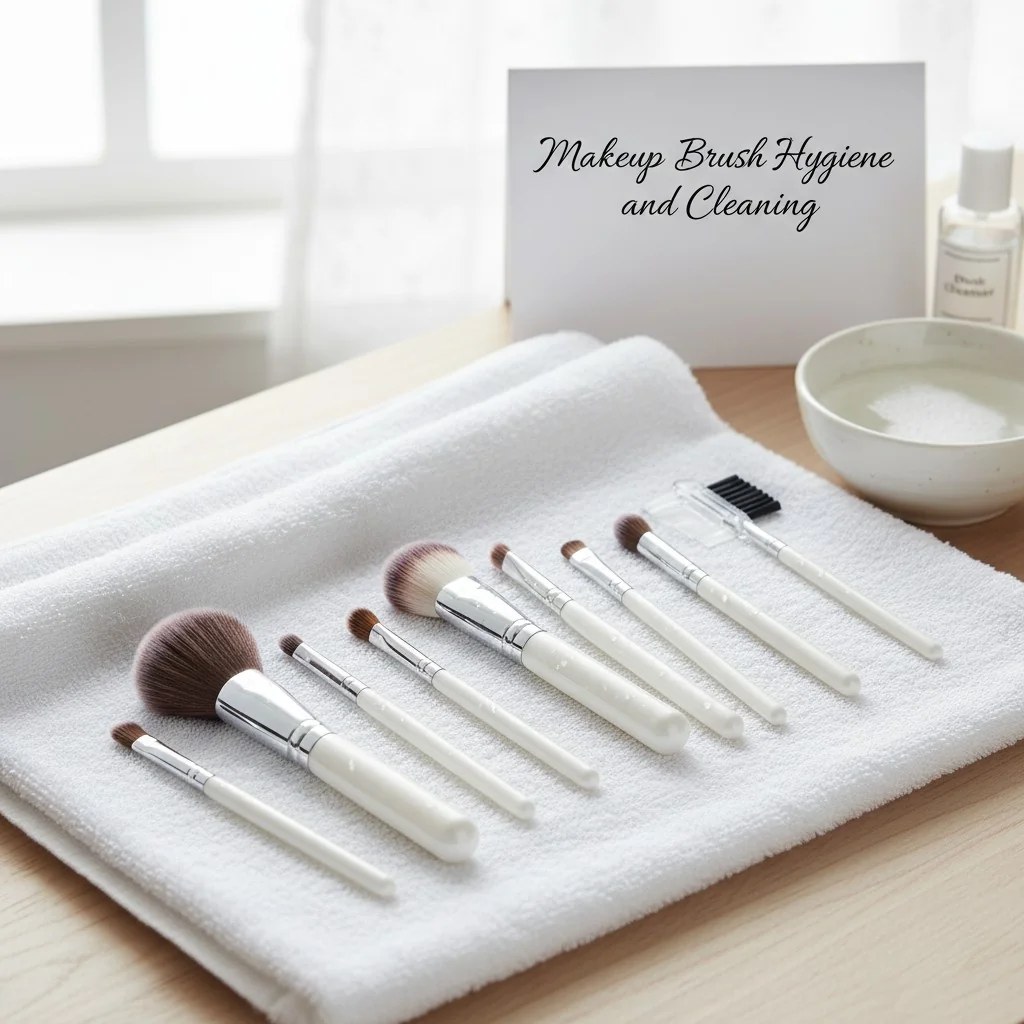
As a brand owner, you are responsible for the safety of the tools you sell. Educating your customers on proper hygiene is part of building a trustworthy brand. But it starts with sourcing a product that is designed to be cleaned effectively and, if you make an antibacterial claim, ensuring that claim is backed by science.
The Data on Dirty Brushes
A recent study highlighted some alarming facts: 44.3% of users reported rarely cleaning their brushes, and 27.8% believed they had skin issues linked to dirty tools. For professional makeup artists, the risk is even higher. This is why you should establish clear cleaning standards for your products.
A Professional Cleaning Protocol
Your brand can be a source of expertise. Advise your customers on best practices:
- For Personal Use: Clean brushes at least once a week.
- For Professional Use: Clean brushes after every single client.
- Method: Use a gentle brush cleanser and lukewarm water. Avoid soaking the ferrule, as this can dissolve the glue and lead to shedding. Lay brushes flat to dry to protect the fibers and ferrule.
How to Verify Antibacterial Claims
If a factory offers "antibacterial" fibers, don’t take their word for it. Ask for the test report. It should specify:
- Test Method: e.g., ISO 22196.
- Species Covered: It should be effective against common bacteria like E. coli and S. aureus.
- Log Reduction: A high log reduction (e.g., >3) indicates strong performance.
- Permanence: Is the treatment permanent and effective even after 50+ washes?
A 2025 study found that 44.3% of users rarely clean their makeup brushes.True
This highlights a major hygiene gap. The study also found diverse bacteria, including Staphylococcus, emphasizing the need for regular cleaning to reduce skin health risks.
Procurement Playbook: What’s on a 12-Point Checklist to Source “Highest Quality” Brushes?
You’re ready to source, but a long checklist can feel overwhelming. Missing one key detail could lead to a bad production run and wasted investment. Here is my simple playbook.
A strong procurement plan covers four key areas: Materials, Quality Control, Compliance, and Commercials. This simple checklist ensures you cover all your bases, from the raw fiber specification all the way to the final delivery terms, protecting your brand and your investment.
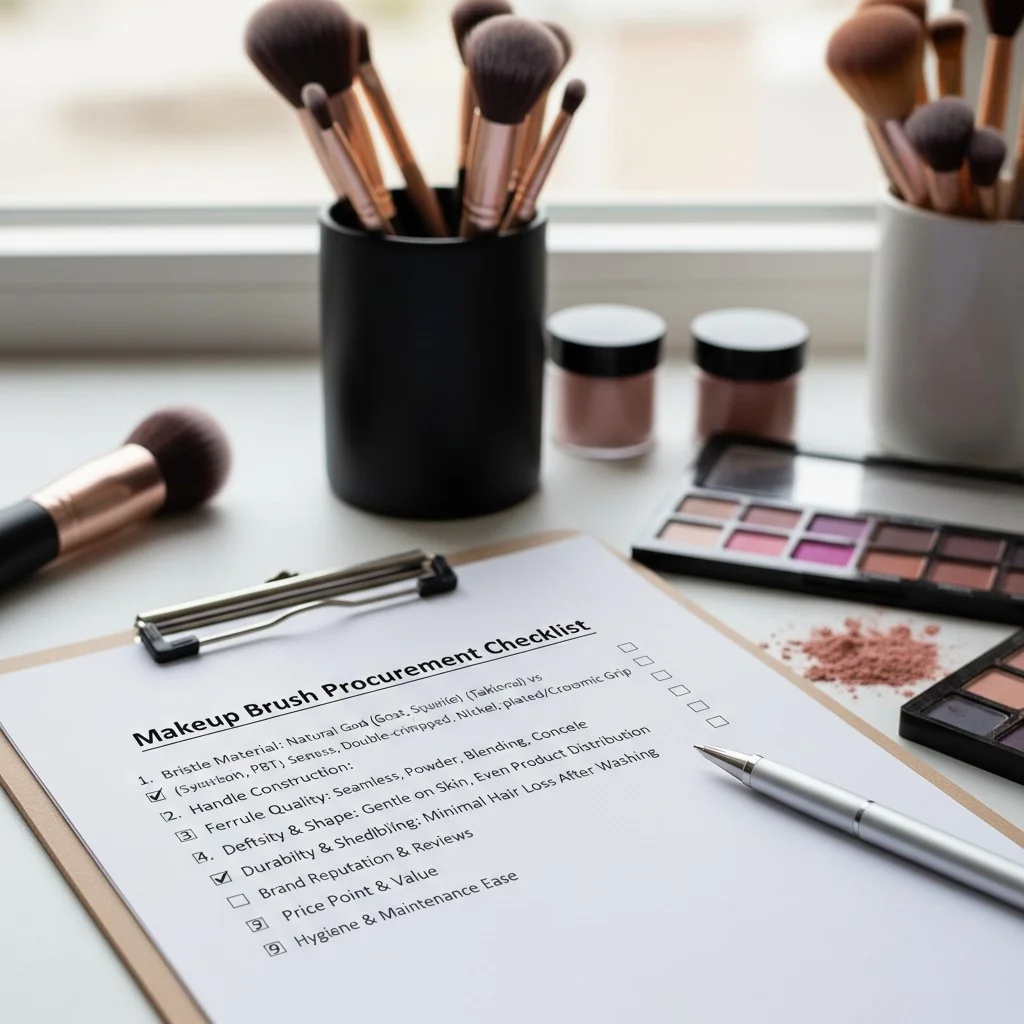
This checklist is the exact framework I use with my clients at Brushino. It turns a complicated sourcing process into a series of clear, manageable steps. It’s designed to address the biggest pain points for brand founders: quality control, transparency, and reliability. Think of it as your guide to sourcing with confidence.
1. Materials Specification
- Fibers: Define the exact fiber (e.g., MCF, BASF PBT) based on whether the brush is for powder or cream. Specify the diameter and taper profile.
- Ferrules: Mandate seamless brass with nickel plating. Avoid aluminum for pro-grade lines.
- Handles: Specify the material (e.g., FSC-certified wood, recycled aluminum) and the target weight and balance for ergonomic control.
2. Quality Control (QC) Gates
- Shedding: Set a zero-shedding target (e.g., ≤1 filament per 100 strokes in a dry test).
- Durability: Require a wash-cycle survival test of at least 50 cycles with no damage.
- Strength: Specify ferrule pull/twist tolerance tests (e.g., >20 N pull force).
3. Compliance & Safety
- Factory Certification: Require a valid ISO 9001 certificate for the facility.
- Material Safety: Demand RoHS and REACH compliance reports for all components.
- Sustainability: If claiming sustainability, require FSC certificates for wood.
4. Commercial Terms
- MOQ & Sampling: Confirm low MOQ availability and get a clear lead time for samples.
- Pricing: Insist on transparent, itemized pricing.
- Continuity: Get a commitment on batch-to-batch consistency and a clear policy on spare parts or defects.
Conclusion
True brush quality isn’t a secret. It’s about knowing the right materials, setting clear QC standards, and partnering with a transparent factory that understands your brand’s vision.
References
-
Understanding advanced synthetic fibers can help you choose brushes that offer superior performance and durability. ↩
-
Seamless brass ferrules enhance the durability and performance of makeup brushes, making them a crucial feature to consider. ↩
-
ISO 9001 certification indicates a commitment to quality management, ensuring consistent product quality from manufacturers. ↩
-
Antibacterial fibers can help reduce microbial growth, but understanding their effectiveness is crucial for hygiene. ↩

